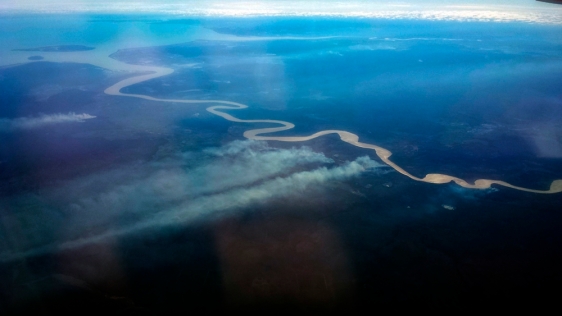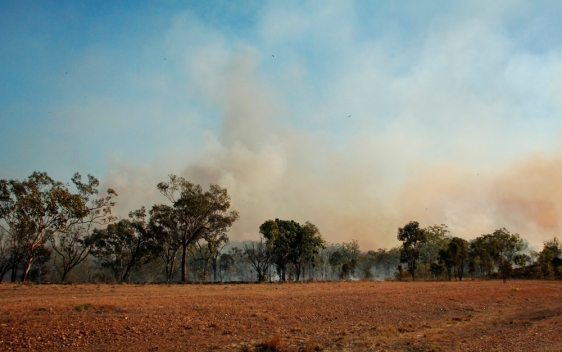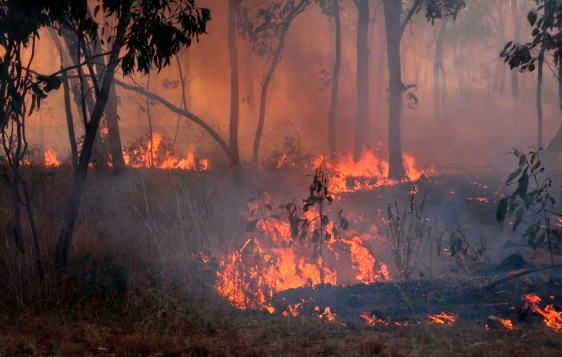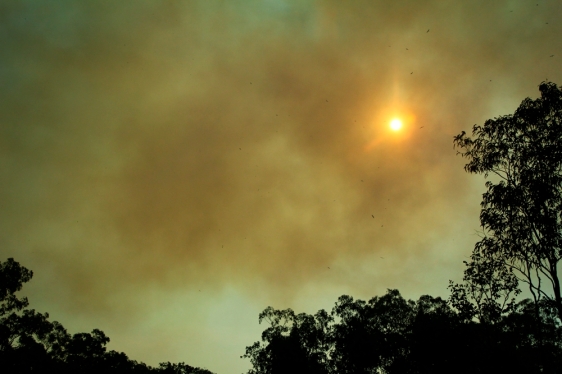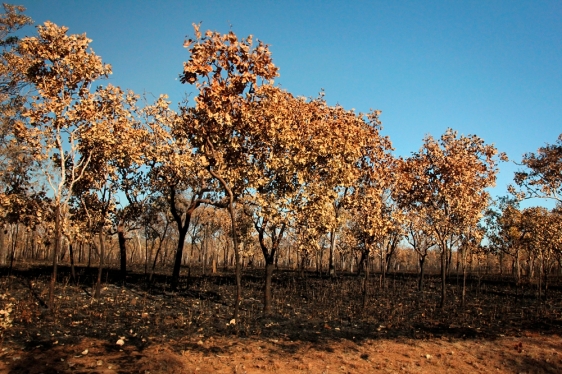Remember when I explained why Australian bushfires can be good — not talking about wild fires of course? I witnessed burning bush and grass in the Darwin region (Northern Territory) on 5 out of 6 days last July (cool season).
Even though prescribed burnings are considered “low intensity” it felt odd to drive through forest areas burning till the border of the street. The following photos are taken out of the car while passing fires in Kakadu National Park.
1. Approaching a managed fire area by car. Park Rangers scout the park for high growing plants, then throw in a few matches to avoid that too much fuel is building up. This shall prevent the region from struggling with high intensity fires, which would be much harder to control.
2. Most of the bushfires I have seen around Darwin were smouldering, producing lots of smoke only. However, I did come across fires with high flames as well, and despite of my distance I clearly heard it crackling and sizzling. Controlled fires usually extinguish on their own during the colder morning hours.
3. The sun through a thick smoke cloud. Since Park Rangers only burn small patches here and there, animals like birds and kangaroos can easily change location. For mice, lizards and other small ground animals however, fires are a real threat. They have to leave their ground holes and escape the heat while hawks are circling above them, watching out for food (yes, the black dots on the photo below are hawks — click on the image to see it in big). They learned fast that fires mean feast time for them.
4. Passing a part of the forest which had been recently burned and now starts to recover. The ashes act like fertilizer for fireproof seedlings.
A few months after, nature recovered, new plants grow wildly and the whole cylce restarts.
What do you think of fire management?
If you like this post you might also like Sun Halo Over Oz…
